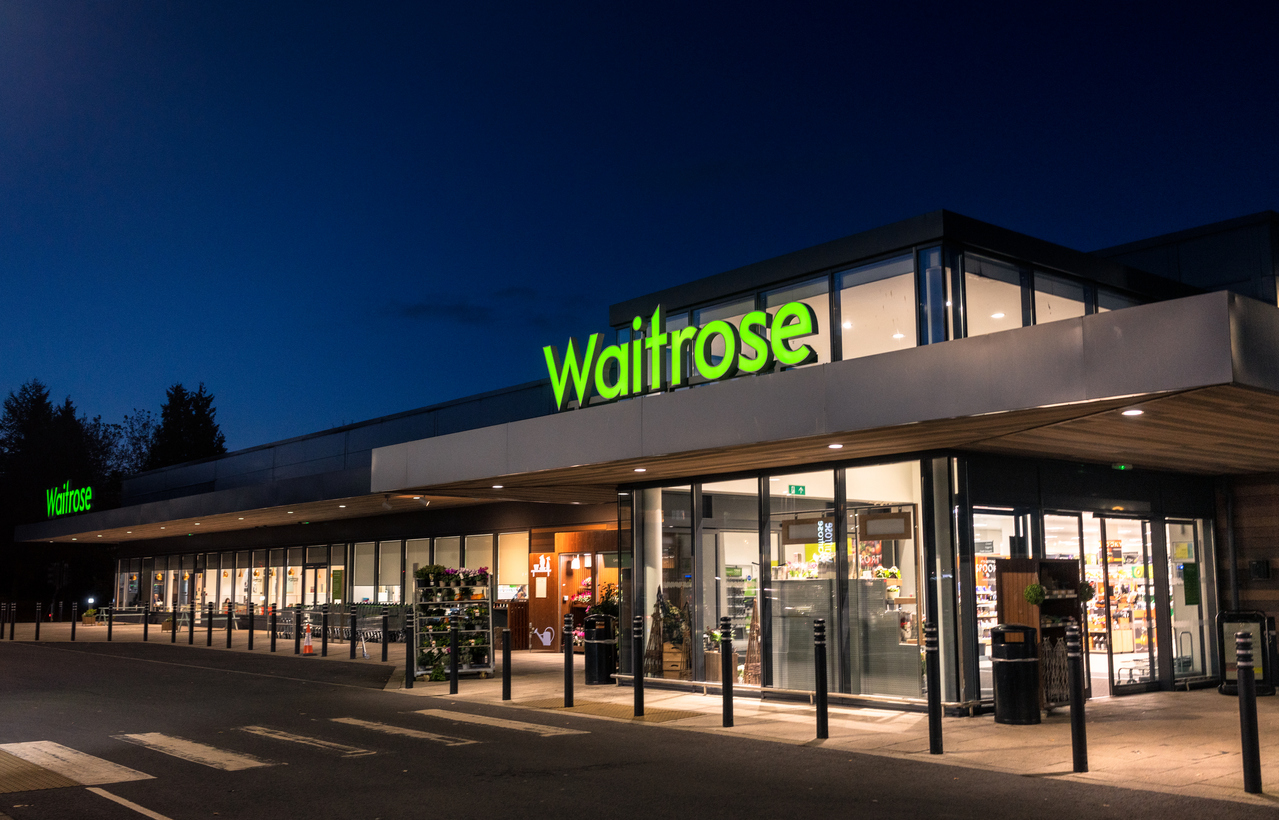I recently had a call with my accountant, a miniskirt-wearing, swashbuckling bon vivant and wine connoisseur. To soothe myself before we rang off – tax is always depressing – I brought up Waitrose, saying by way of apology for my erratic finances that most of my money went in the supermarket, a large branch of which is between my nearest Tube station and my flat. She hemmed knowingly down the phone. We both agreed it was a good use of funds. Life’s short – or might be. If one can, surely one ought to eat what one wants? And if that means a pair of smoked salmon, pea and lovage terrines or five types of mackerel pate on a Monday, or a medley of pre-chopped mango and strawberry with own-brand coconut and lime ice cream, then so be it.
There is much general discourse about Waitrose in the United Kingdom. One barb that all Waitrose shoppers will be familiar with is that it is for out-of-touch snobs only, Marie Antoinette figures who think nothing of paying over the odds for their tatsoi, baby kale and Burford Browns when the country is heading for penury. In short, Waitrose is accused of not being Lidl or Aldi or Tesco. A recent Which? report found it to be the most expensive supermarket every month of 2022. In December, the report said, a shopping basket of 48 groceries cost an average of £81.63 at Aldi, with the equivalent shop at Waitrose costing £112.62 – 38 per cent more. What the report doesn’t say is that the experience – and the quality of the items – will have easily been 38 per cent better.
This year has also seen hubbub over Waitrose’s discontinuance of sales of Warburtons crumpets due to poor demand. As a proud buyer of Waitrose’s own-brand breads (Warburtons crumpets indeed) I nodded approvingly. Are us W-shoppers too snooty for Warburtons? You bet we are.
The truth is that griping about how expensive Waitrose is like griping about the fact that the crown has jewels on it
The truth is that griping about how expensive Waitrose is like griping about the fact that the crown has jewels on it. Just as that is about more than dazzle and showing off – religion, history, politics and custom come into it – Waitrose is about much more than elitist food habits.
Indeed, I would go so far as to wager that Waitrose comes close to being a whole class system and religion in itself, but an improved version of each: flexible, inclusive and aspirational. Below the griping, the Waitrose premium is manageable, if only on special occasions, for many people. In fact, a 550g block of Cathedral City cheddar is actually cheaper (£4.52 with the current 20 per cent discount) than at Tesco, where it’s £5.25 if you don’t have a Clubcard. And Waitrose has the kind of management credentials that should make everyone happy, not snipey: part of John Lewis, it is a cooperative, no shareholders in sight. Its trainee scheme is one of the best in Britain, democratising the path from shelf stacker to head honcho, and many branches make a point of employing young and local ethnic minorities.
That supermarkets are entire ecosystems bringing together complex and highly sensitive infrastructures of demand and supply, agriculture, manufacturing and labour is nothing new. What’s different about Waitrose is that the shops, with their low ceilings and cramped aisles, are somehow cosy; with the sense of a packed house of treasures of use to yummy mummies, fitness freaks and stooped grandpas alike. It is for this reason that I almost always make a point of dropping in when I get off the Tube: a slow wander round Waitrose is good for my mental health – and certainly cheaper than a trip to the therapist.
I also see a slow wander round Waitrose as an opportunity to revel in the splendours of late capitalism when those very splendours are constantly sneered at. For me, a particularly happy moment comes at Christmas when I make a tradition of counting all the types of salmon canapés, which, from mousses to terrines to parcels, usually number at around ten. And how can one but marvel at how the shelf of smoked nitrate-free bacon is empty one evening, and full the next day?
The creativity and responsiveness encouraged by capitalism is also visible in the way Waitrose tweaks its sauces and spices to suit cooking trends: pomegranate molasses in the wake of Ottolenghi’s success; a wide array of new sauces as east and south-east Asian cooking has taken hold, and so on. Its new ranges also anticipate our every desire: I’m particularly impressed by the Middle East-inspired Levant line. Even if some of it misses the mark – Baharat-spiced courgettes with feta are a particularly bland and tinny disappointment – the ingredients are almost entirely natural. Convenience and nutrition in one.
Is it cheaper to do one’s shopping elsewhere? It can be, especially for the basics. But I will always defend Waitrose’s prices: if it is expensive, it is reassuringly – and not unreasonably – so.







Comments